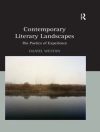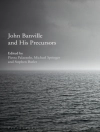‘A Room of One’s Own’ began life as a pair of lectures delivered by Virginia Woolf in October 1928 at Newnham College and Girton College, women’s colleges at the University of Cambridge and was published as a stand-alone book in 1929. In this brilliant examination of literature, history and gender discrimination, Woolf posits that the dearth of female writers in literature did not result from a lack of talent; it was the lack of opportunity. Historically, female writers were thwarted in their literary pursuits by a culture that disapproved of female authors, by gatekeepers within the literary establishment who barred women from participating and by societal pressures that attempted to shoehorn women into being primarily wives, mothers and housekeepers. Woolf’s devastating critique of these injustices has been hailed as one of the finest pieces of literary criticism for almost a century. ‘A Room of One’s Own’ is presented here in its original and unabridged format.
Об авторе
Adeline Virginia Woolf (1882-1941) née Stephen, was an English writer, publisher and feminist. She is considered one of the most important early 20th-century authors and was an early practitioner of what became known as ‘stream of consciousness’ writing. Born to a wealthy family in London, Virginia was the seventh of Julia Prinsep Jackson and Leslie Stephen’s eight children. The Stephens children were home-schooled in English classics and literature and Virginia was encouraged by her father to pursue writing as a career. When their mother, Julia, died of influenza in 1895, the older siblings took on their mother’s role in raising the children. In 1912, Virginia married Leonard Woolf, who was a strong supporter of Virginia’s budding writing career. Virginia published her first book — The Voyage Out — in 1915 through her half-brother’s publishing house, Gerald Duckworth and Company, but soon afterwards Virginia and Leonard Woolf founded Hogarth Press which would publish most of Virginia’s novels as well as works by E.M. Forster and T.S. Eliot. The best known of Virginia’s literary works include Mrs. Dalloway (1925), To the Lighthouse (1927) and Orlando (1928). Virginia and Leonard Woolf’s relationship was based on mutual respect but not physical attraction. Virginia was most likely a lesbian, though some have argued that she may have been bisexual. At any rate, Virginia had affairs with several women and her aversion to men and masculinity is often attributed to the sexual abuse she suffered at the hands of her half-brothers when she was a child. Virginia Woolf enjoyed great literary success in her lifetime and her books have been translated into more than 50 languages. Though her popularity waned in the years following her death, the feminist movement of the 1970’s did much to revive her reputation and solidify her as one of the most important writers of the 20th century. Mental illness continued to trouble Woof for the rest of her life. In 1941, Woolf wrote a suicide note to her husband, filled the pockets of her coat with stones and drowned herself in the River Ouse in Yorkshire.












